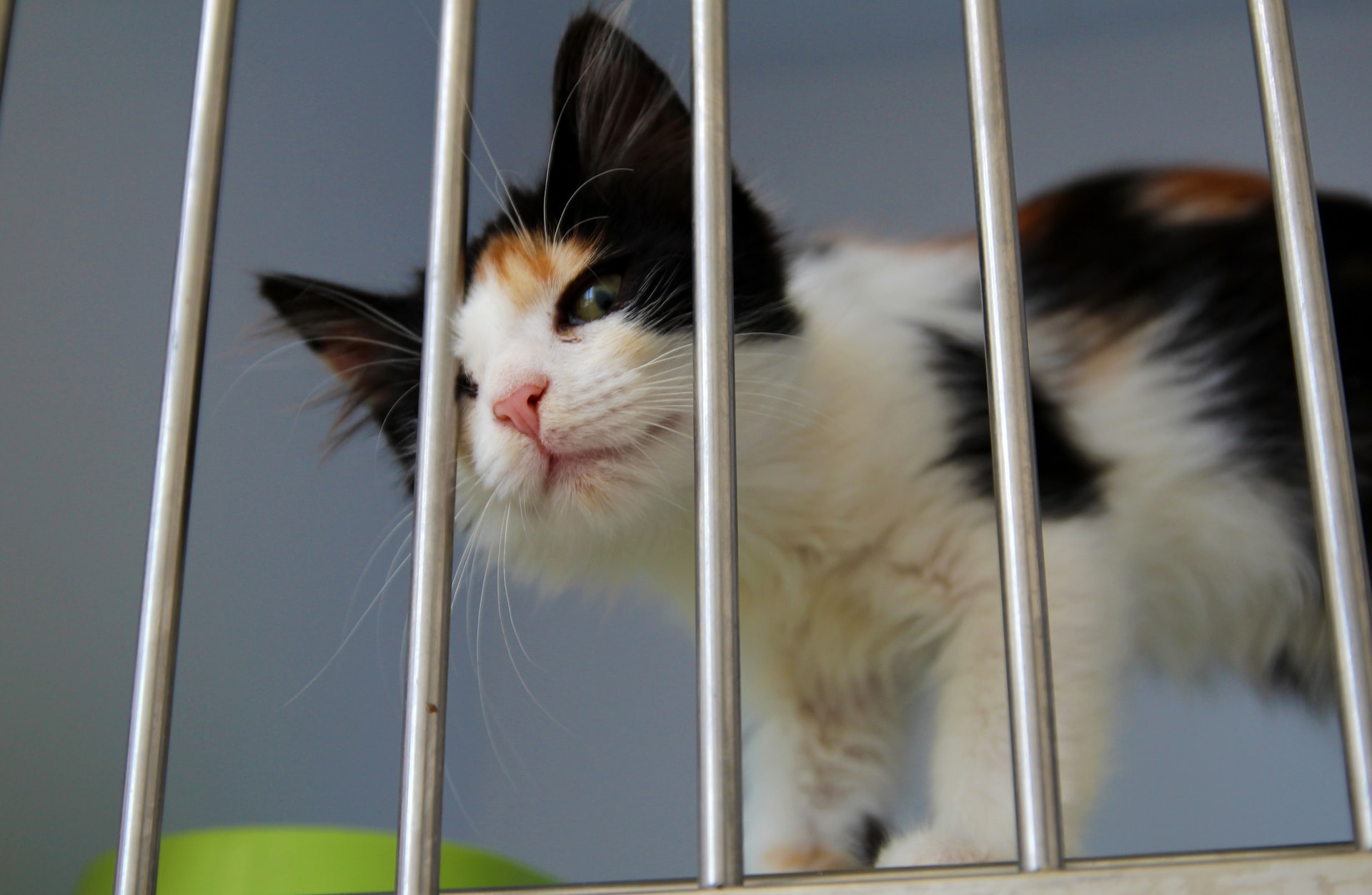Despite not being known as man’s best friend, cats are the second most popular pet in the United States. These playful, cuddly, mischievous creatures reside in about 42.7 million homes across the country. However, as popular as our fluffy, feline friends are, millions of cats still end up homeless or in animal shelters or rescues every year.
The American Society for the Prevention of Cruelty to Animals estimates that approximately 3.2 million cats enter animal shelters each year. About 27% — 864,000 — of these animals end up euthanized due to a lack of space within the less than 14,000 shelters/sanctuaries that exist in the United States. About 70 million homeless cats roam the streets, mostly in urban areas. A large number of these cats are either abandoned or lost.
By taking the time to read this article, it’s clear that you are most likely a cat person or an all-around animal lover. As such, you may find yourself wondering what actions you can take to help massively reduce the homeless cat population. The good news is that there are many things you can do to contribute to this cause.
Change Begins in the Home
A huge step toward reducing the number of homeless cats is to first take care of your own. One way to do that is to get all of your feline family members spayed or neutered. I must admit that kittens are breathtakingly cute, but if you breed your cat and cannot successfully keep or rehome all of their kittens, the number of homeless cats can only increase. On average, a cat gives birth to between three to five kittens per litter but can have more than 10.
Breeding your cat may seem more manageable than trying to introduce a new cat to your current household, but with so many living out on the streets, there is no need to increase the population. Bringing a new cat into your home requires an introductory phase; but again, it is worth it. In doing so, you help reduce the number of cats in shelters and rescues who could end up euthanized instead of finding a loving forever home.
Like all living creatures, each cat exhibits a unique personality with its own set of quirks. Cats have specific needs and can pick up unwanted habits if their needs are left unfulfilled. Many cat guardians relinquish their pets to a shelter/rescue or abandon them because they do not know how to fix the unwanted behavior properly. Cats must have an adequate number of litter boxes, scratchers and furnishings that allow them to have access off the ground, known as catification. Happy cats mean happy cat guardians.
Many people believe that cats should roam free instead of staying cooped up in a yard or being walked on a leash like a dog. However, there are good reasons why cats should receive the same treatment as dogs. Many people mistake free-roaming cats for strays and try to catch them and send them to an animal shelter or rescue. If you do not take the time to spay or neuter your cat, they risk a considerable chance of getting pregnant or breeding if they’re allowed to go outside unaccompanied.
There are plenty of cats who are content living indoors, but some may benefit from a safe outdoor enclosure or a catio. Also, cats can learn to walk on a leash just like a dog. If your cat seems interested in going outside, try learning to leash-walk your cat.
Help Your Local Homeless Cats
If you consider bringing a cat into your life, do not search for a place to purchase a cat. Instead, adopt a cat from a shelter or rescue to reduce the number of cats that end up euthanized from lack of space and resources. Plus, if you purchase a cat or kitten from a seller, there is a good chance your money is supporting a kitten mill, which is a dreadful environment for any living creature to endure. Adopting helps eliminate the very kitten mills that can contribute to intensifying the homeless cat crisis. It also supports organizations that have animals’ best intentions at heart and work to reduce the number of homeless cats.
Shelters and rescues always need help. Volunteering to foster cats and kittens helps increase the number of animals that shelters and rescues can take, leading to fewer cats getting dumped on the side of the road somewhere or ending up euthanized. The shelter or rescue provides the necessities needed to care for the animals and also keeps fosterers up-to-date on the adoption status of the cat(s) in their care.
Community Cats
For homeless cats, terms such as stray or feral are typical, but have you heard the phrase community cat? Alley Cat Allies describes these cats as nonsocial and unadoptable felines that coexist outdoors with the rest of the wildlife. Viewing homeless cats as pests is a misunderstanding. Many people fear that strays cause significant harm to neighborhood wildlife, but Alley Cat Allies explains that community cats coexist with nature as part of a balanced ecosystem.
When handling community cats, people often make the mistake of capturing and taking them to a shelter under the assumption they are doing the animal a favor. Unfortunately, since these particular cats have no experience with human interaction and live independently from human assistance, they are often euthanized because the shelters cannot find homes for them. A better method is the trap-neuter-return program. The community cat is humanely trapped and taken to a vet clinic to receive vaccinations and get spayed or neutered. Then the animal is released back into their original territory. To mark a cat to show its participation in the trap-neuter-return program, vet clinics clip three-eights of an inch off of the top of a cat’s left ear, a process called eartipping.
Cats are strong-minded, self-sufficient creatures able to survive independently from humans, but that doesn’t mean that humans don’t play a role in their well-being. If you are yearning to help improve the quality of life for homeless cats, take the time to reach out to a local shelter or rescue and see what you can do to help.
Do not forget the importance of caring for the feline family members already in your life. Ensuring your cats get spayed or neutered and providing them with safe and happy homes are just as vital to decreasing the overpopulation problem of homeless cats.

















